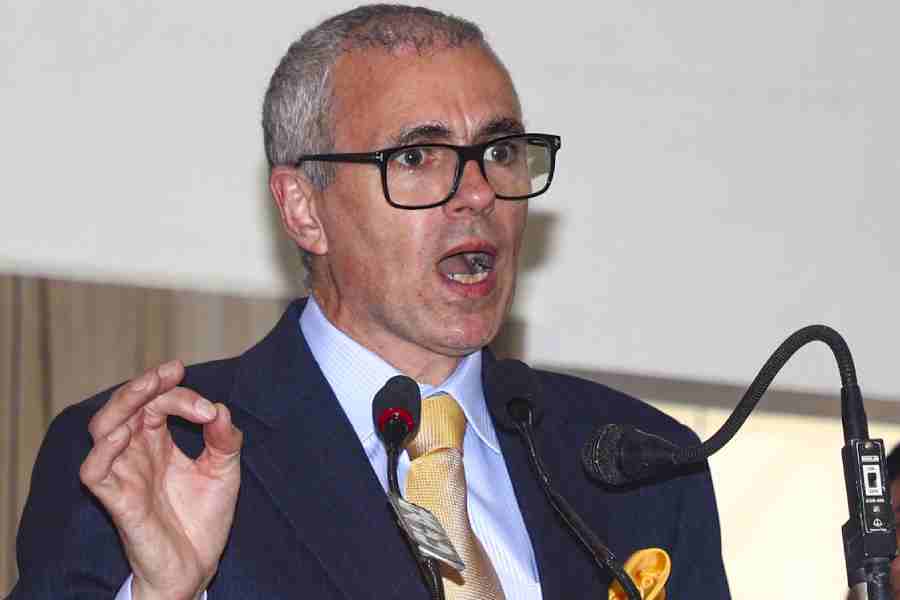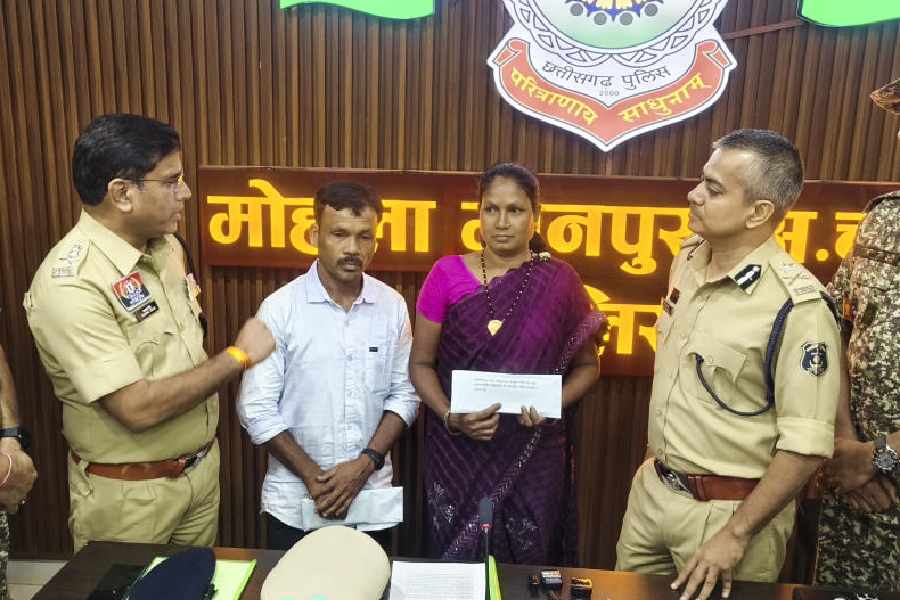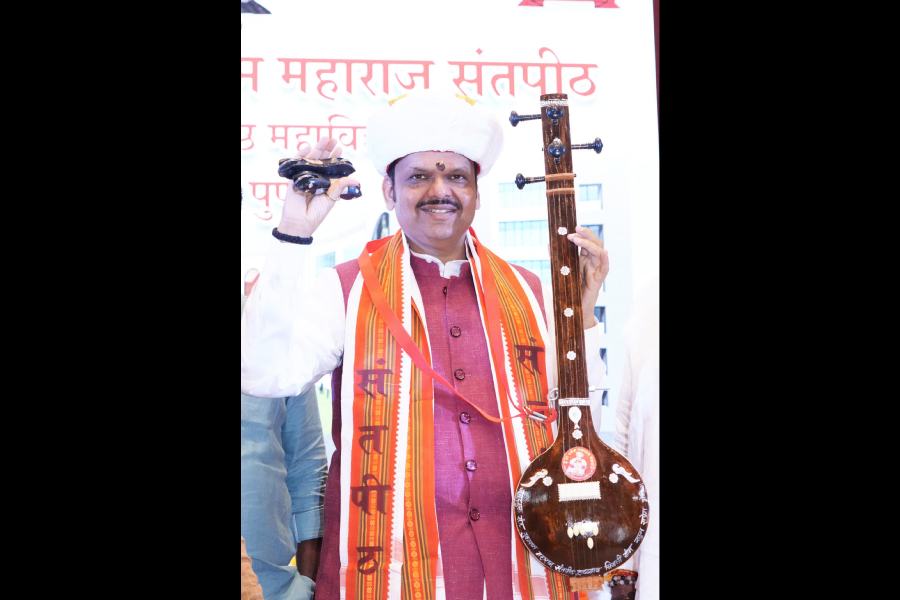 |
| Stone splendour in florence |
 |
| At the gate of the walled city of Volterra |
 |
| The Puccini Opera on the lake |
The bride and the groom embrace, locking into a lingering kiss, and the magnificent square resonates with the ripples of spontaneous applause, as the tourists and locals cheer in sync.
It’s wedding number ten of the day at the central square church in Siena — the setting for the Palio, the stone-track horserace captured in that breathtaking sequence in Quantum of Solace, the calling card of this vibrant Tuscan town founded by the sons of Remus.
Siena, a relatively unknown quantity to Indian tourists, pretty much embodies the spirit of Tuscany, throbbing with an animated energy completely its own — a city where every stone has remained unchanged for centuries.
The horseracing festival takes place twice a year, in July and August, where the winner goes home the poorer, with no prize money but only fierce prestige at stake. Each of the 17 contradas (districts) — carrying animal mascots like the caterpillar or the dragon — vie for pole, and with odds on offer by Ladbrokes even in faraway London for out-of-towners.
“Just imagine over 25,000 people packed in a dense throng like a can of sardines in the middle and horses sprinting around in a perimeter ring, with another 5,000 spectators watching from windows and balconies and every possible vantage point,” says our guide Cristina Amberti from Sienatours. I replay the Quantum race sequence in my mind, and it’s not hard to imagine the brute chemistry between hooves and hoopla at all.
The jockeys wear iron helmets in the colours of the contradas they represent, there are no rules, the horses race clockwise around the square for three laps and it’s all over in about 76 seconds. The winner gets the Palio — a piece of painting on silk depicting Madonna, painted by artists handpicked from around the world.
The Palio is unique, but Siena has other USPs as well. It was the first town in Europe to close its city centre to traffic, in 1966. It’s a cultural centre boasting a 750-year-old university and home to other prestigious institutions like the Chigi Music Academy and the University for Foreigners. And it has the Enoteca Italiana, the most revered wine pilgrimage point in Italy.
Now, the reason I have lingered on Siena in this travel tale is the fact that a majority of Indian tourists bound for Italy do just the Rome-Florence-Venice triangle, while the biz crowd goes to Milan. Florence can offer but a slice of Tuscany. There’s so much more to the region waiting to be explored.
Located in the heart of Italy, between the Mediterranean Sea and the Apennines, Tuscany is a treasure-trove of art, breathtaking landscapes and protected natural areas, languid seaside resorts and a clutch of quaint small towns and hamlets. There are great golf courses close to the art towns, mountains, sea and hills, and the temperate climate allows one to tee off all year round.
Tuscany houses more than half of Italy’s artistic heritage, including the works of masters like Giotto, Masaccio, Botticelli, Brunelleschi, Leonardo and Dante. Every town and village weaves its own unique tapestry of history. Take the enchanting walled town of Volterra, made famous by Stephenie Meyer in her bestseller New Moon, which treasures the heritage left behind by the mysterious race of the Etruscans in the Etruscan Museum and the carefully preserved tombs. With expert commentary from our guide Vincenzo Riolo, we also get to marvel at the ornate Palazzo Viti, watch deft artisans create magic at an alabaster marble workshop and round the day off with the flag-waving show by the Sbandieratori group of kids, a painstakingly preserved medieval ritual.
“We offer over 900 seaside resorts, 39 spas, 211 protected areas, natural parks and reserves, 479 museums, 160 historical villas and gardens, 78 historical hamlets and a rich calendar of music, theatre, dance, arts and entertainment festivals,” declares Ivano Fucci, our young escort representing the Regione Toscana. But Tuscany can’t be captured in mere numbers, it’s a scintillating collage of sights and sounds and aromas.
Our Tuscan trail takes us to Arezzo, another key Etruscan settlement. A walkthrough of the old city which unwinds through the valley of the Tiber, the Valtibernia, taking in the towns of Sansepolcro and Monterchi, is also a journey in discovering the works of Piero della Francesca. These include the masterpiece — Legend of the True Cross — in the Basilica of San Francesco in Arezzo and the Resurrection in Sansepolcro.
At the centre of the city stand the cathedral, the Palazzo Comunale and the Medici fortress, from which the main streets fan outwards, down to the city gates. A sizeable chunk of Sylvia Nasar’s A Beautiful Mind was shot on location here.
Tuscany’s tryst with celluloid is strewn all across the picturesque valleys and rolling hills. In Cortona, we trek past the lavish villa which was the key setting for Under the Tuscan Sun, starring Diane Lane.
 |
| Vignamaggio: Setting for Leonardo's Mona Lisa |
 |
| A giant float at the Carnival Museum in Viareggio |
 |
| The leaning tower of Pisa |
 |
| Fine wines in Chianti |
Another fascinating stop is the Carnival Museum of Viareggio, situated in the new complex of the Cittadella del Carnevale designed by architect Francesco Tamassi, home to the allegorical floats that stitch together the second largest carnival in the world after Rio. The fulcrum of the floats, the giant walking masks, are made with the technique of papier-mâché, or more precisely, the Viareggio carta a calco, which gives great formal-aesthetic results. Artists work on themes, giving shape to the tableau tale using bizarre, satirical shapes made from clay and paper, highlighting through a burlesque vocabulary the vices and flaws of modern society — through spry takes on an Obama or a Berlusconi.
A distinguished panel of judges picks the top three floats from scores of participants in the March carnival every year, which are then parked in the giant hangars on display for a few months before being destroyed to make way for the next edition.
A trip to Tuscany is incomplete without a visit to the vineyards, and so we set out for the Chianti region, fabled for its fine wines. Ancient hamlets, churches and abbeys, turreted castles and fortresses, farmhouses and villas dot the region.
Our destination is Greve in Chianti, situated at what was the crossroads of an important road axis of yore. The numerous castles in the surroundings have found adaptive reuse in the form of elegant residences of famous estates. Some of these are Uzzano, Verrazzano, Vicchiomaggio and our morning halt Vignamaggio, where Leonardo’s legendary Mona Lisa was born. “A good wine stands on the two legs of acidity and structure, and here at Vignamaggio, we strive to achieve the perfect balance between the two, with the right kind of fruity-ness,” smiles Sandro Checcucci of the estate.
Once you arrive in Florence, it’s not difficult to imagine why this is Europe’s art capital. Cimabue and Giotto, the fathers of Italian painting, lived in Florence, as did Arnolfo and Andrea Pisano, restorers of architecture and sculpture, Brunelleschi, Donatello and Masaccio, the founders of the Renaissance, Botticelli, Paolo Uccello and the universal talents of Leonardo and Michelangelo…
Their works are now preserved in the numerous museums of the city, some of the most significant pieces in the Uffizi, the most famous art gallery in the world, which takes my breath away — specially the Botticellis, the Raphaels and the few violent pieces of Caravaggio.
We are also in the other touristy touch-point of Tuscany, the Leaning Tower Of Pisa, which highlights the tetralogy of piazza del Duomo. Pisa has a history going back over a thousand years, and besides its Roman and Gothic churches, squares and palaces, it is also an important university centre with the distinguished institution of Scuola Normale Superiore in Piazza dei Cavalieri, the crown jewel.
The visit to the Carrara caves, the giant centre for excavation, working and trading of marble, deserves special mention too. Located at the feet of the Alpine Apuane and surrounded by green hills, the name of the city derives from the term kar (stone) and is testimony to its ancient origins.
Tuscany has over 633km of coastline with 191km of beaches, and we are delighted to be at the twin marvels of Versilia and Forte dei Marmi — must visits for lovers of the dolce vita — where a seafood feast at the Grand Hotel Principe di Piemonte is unforgettable. En route to Versilia, we stop at the Puccini Lake and the museum showcasing the works of Italy’s most important classical composer.
We take time out to squeeze in Lucca, another delightful Tuscan town, with its Roman amphitheatre, the Basilica of S. Ferdiano, the square and the church of S. Michele and the Duomo of S. Martino with the Holy Vault.
Subhro Saha
Pictures by the author










